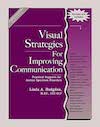Autism Center Grab and Go Resource Gallery of Interventions
Choice Boards
Discover a choice board, which is a visual support used by an individual to communicate a desired activity, item, or location. Choices can be represented using the individual's mode of communication, such as objects, photographs, icons, black and white line drawings, or words. Choice boards may or may not include written words along with the pictures. The number of choices offered depends on the individual. Some ideas for choice boards include academic, leisure, play activities, reinforcers, turn taking, or food choices. Choice making is limitless!
Examples

Choice Boards
- Choice Board - 3 Panel Activities - Photos
- Choice Board - 3 Panel Blank Template
- Choice Board - 4 Panel Blank Template
- Choice Board - 4 Panel Schoolwork - Photos
- Choice Board - 6 Panel Blank Template
- Choice Board - 6 Panel Food/Drink - Photos
- Choice Board - Object
- Choice Board - Post-It Notes Written Words
- Choice Board - Real Pictures
- Choice Board - Sensory Activities - Boardmaker Icons

Visual Strategies for Improving Communication (Revised & Updated Edition): Practical Supports for Autism Spectrum Disorder
Hodgdon, Linda
Practical supports for school and home Visual Strategies for Improving Communication: Practical Supports for School and Home contains numerous strategies to enhance communication interactions for students who experience autism and other moderate to severe communication disorders. A "how-to" book, designed to assist teachers, Speech-Language Pathologists, and parents in devising solutions to the communication and self-management challenges that are common to these students. Full of examples and illustrations, this book describes specific strategies that capitalize on the visual strengths and learning style of this population. The first goal when working with these students is to create an environment that will support communication and make communication breakdowns less likely to occur. This is accomplished in part by developing a system of visual tools and aids to increase communication effectiveness. Schedules, aids to give directions, and aids to give information, and aids to establish and communicate rules are tools designed to increase the student's understanding of what is happening around him. A second goal, improving student independence and participation, is met with the presence of visual tools.
Resources
Check out our AT lending library devices to support communication. Browse library>Find Media Type>Devices